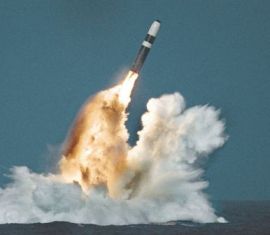The Arms Race in the Cold War
Learn about the history of the Arms Race during the Cold War. The United States and the Soviet Union building nuclear weapons stockpiles

The Arms Race in the Cold War
How was the arms race in the Cold War ?
The United States and the Soviet Union entered a nuclear arms race during the Cold War. They both spent countless billions of dollars in an effort to amass sizable nuclear weapon stockpiles. The Soviet Union was spending about 27% of its whole gross domestic product on the military near the conclusion of the Cold War. Their economy was destroyed, and it also contributed to the end of the Cold War.

Nuclear weapon development in the USSR and the US
The Nuclear Bomb
With the help of the Manhattan Project during World War II, the United States was the first country to create nuclear weapons. By unleashing nuclear bombs on the cities of Hiroshima and Nagasaki, the US put an end to the war with Japan.
Tens of thousands of people can be killed and a whole city can be destroyed by nuclear bombs, which are incredibly potent weapons. The only time nuclear weapons have been employed in combat was against Japan at the close of World War Two. The Cold War was based on the idea that neither side wanted to start a nuclear conflict that could wipe out a large portion of the developed world.
Start of the Arms Race
The Soviet Union successfully tested its first atomic weapon on August 29, 1949. The entire planet gasped. They misjudged how far advanced the Soviet Union’s nuclear program was. The Arms Race was under way.
The first hydrogen bomb was launched by the United States in 1952. The nuclear bomb had never been stronger than this. In response, the Soviet Union detonated its first hydrogen bomb in 1953.
ICBMs
Both nations worked on creating intercontinental ballistic missiles (ICBMs) throughout the 1950s. As far away as 3,500 kilometers might be used to launch these missiles.
Defense
The concern over what may occur if war broke out grew as both sides continued to produce new and potent weapons. The military started developing defenses, such as huge radar arrays to detect missile launches. They also focused on anti-ICBM missile defense systems.
The construction of subterranean bunkers and bomb shelters allowed people to prepare for nuclear assault. High ranking government officials were given deep underground residences where they could live safely.
Mutual Assured Destruction
The concept of MAD, often known as mutual assured destruction, was one of the main causes of the Cold War. This implied that, in the event of an invasion, each nations could completely destroy the other. No matter how successful the initial attack, the other side might still strike back and obliterate the nation that launched it. This is why there have never been nuclear weapons attacks. The price was excessive.

Trident Missile
Other Countries Involved
Three additional countries also worked on developing the nuclear bomb and possessing nuclear weapons during the Cold War. They included the People’s Republic of China, France, and Great Britain.
Détente and Arms Reduction Talks
The cost of the Arms Race increased as it intensified for both nations. Both parties knew that a compromise had to be made in the early 1970s. The two sides started conversing and adopting a more accommodating stance. This thawing of tensions was referred to as détente.
With the SALT I and SALT II accords, the nations pledged to reduce their arsenals in an effort to slow down the Arms Race. Strategic Arms Limitation Discussions are referred to as SALT.
End of the Arms Race
The collapse of the Soviet Union at the end of the Cold War in 1991 effectively put an end to the Arms Race.
Facts About the Arms Race in the Cold War
- Even Vice President Truman didn’t learn about the Manhattan Project until after he was elected president since it was top secret. Joseph Stalin, the dictator of the Soviet Union, was aware of it all because his spies were so proficient.
- A nuclear bomb could be delivered over 6,000 miles in the US B-52 aircraft.
- According to estimates, there were enough nuclear bombs constructed by 1961 to end the planet.
Read also : History of Renaissance
 The First Encyclopedia Your First Knowledge Home
The First Encyclopedia Your First Knowledge Home
